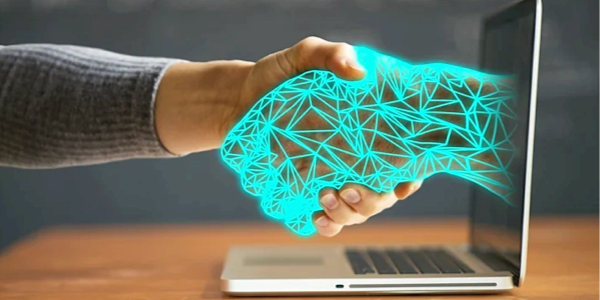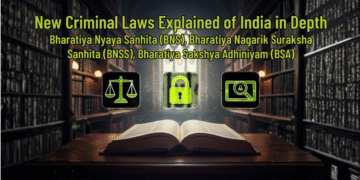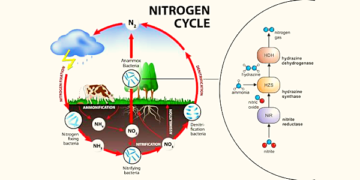We shall discuss Assistive Technology in this essay. Let’s also learn more about the meaning, needs, importance, and example of an assistive technology device, What AT is, as well as Global reports and other topics. This topic is covered in GS prelims paper l and GS Main paper ll under current events of national and international interest. So make sure you read the whole thing. Let’s begin.
What is Assistive Technology (AT)?
- Assistive technology is an umbrella word for systems and services connected to the delivery of assistive products and services.
- Assistive technology refers to items, equipment, and systems that help people with disabilities study, work, and live their lives.
- Any device, piece of equipment, software program, or service product that aids people with a disability that is increasing, maintaining, or improving their functional abilities is known as AT.
- Technologies and devices include prosthetics, braces, walkers, special-purpose computers, customized switches, screen readers, and specialized curricular software.
- Everyone, everywhere, gets the assistive technology they need, regardless of their financial or other circumstances.
- Hearing aids, wheelchairs, communication aids, spectacles, pill organizers, memory aids, artificial limbs, and other vital products for the aged and disabled are among the items on the WHO’s Priority Assistive Products List, which was published in 2018.
Why in the news
The World Health Organization (WHO) & the United Nations Children’s Fund (UNICEF) have collaborated to release the first Global Report on Assistive Technology (GReAT).
The paper was created in conjunction with UNICEF’s Office of Research. Innocenti provides evidence-based best practice examples as well as ten important actionable suggestions for improving access to assistive technology for all children.
Don’t forget to check out other important UPSC preparation topics here— UPSC Study Materials. Now that you understand what is the meaning of an assistive technology device, let’s look at its requirements, importance, global report, and examples.
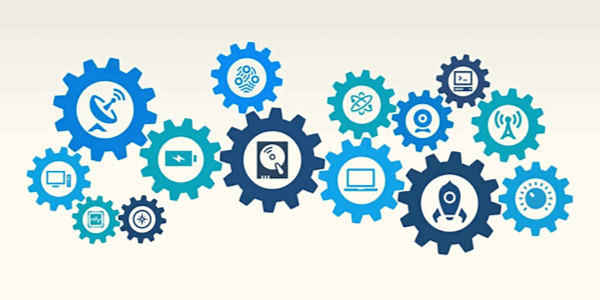
Importance of Assistive Technology
- According to WHO, more than one billion people worldwide require one or more assistive products.
- With the world’s population aging and non-communicable diseases on the rise, By 2030, over 2 billion people will probably require one assistive product, with many older people requiring two or more.
- Today, only one out of every ten people in need has access to assistive technology.
- People with disabilities can use assistive technology to live healthy, productive, independent, and dignified lives, as well as engage in school, the work market, and civic life.
- Assistive technology minimizes the need for official healthcare and social services, as well as long-term care and caregiver duties.
- People are often excluded, alienated, and trapped in poverty without assistive technology, which increases the impact of illness and disability on people, their families, and society.
- Assistive technology has the potential to improve a person’s and their family’s health and well-being, as well as provide broader socioeconomic benefits. As an illustration:
- Hearing aids used correctly by early children lead to enhanced language abilities. Also, which limits a person with hearing loss’s educational and employment options
- Because the risk of pressure sores and contractures is reduced, manual wheelchairs promote access to school and employment while lowering healthcare expenses.
- Assistive technology can help seniors stay at home longer. Avoid long-term care diabetes-specific footwear minimizes the occurrence of foot ulcers, reducing lower-limb amputations and the related financial impact on health-care systems.
Global Report on Assistive Technology
- This study is the result of a resolution passed by the 71st World Health Assembly in 2018. To create a global report on effective access to assistive technology.
- The report is important because 90% of people who need assistive technology don’t have it. Also, incorporating assistive technology into health systems is crucial for progress toward the Sustainable Development Goals (SDG) targets for Universal Health Coverage (UHC).
Highlights of the report:
- Individuals Require Assistive Devices:
- Over 2.5 billion people require one or more assistive products, such as wheelchairs, hearing aids, or communication and cognition-supporting apps.
- A billion people are denied access to assistive items, especially in low- & middle-income countries, where access to these life-changing products can be as low as 3% of demand.
- Future Number of Individuals Requiring Assistive Products:
- By 2050, the number of people in need of one or more assistive goods is predicted to reach 3.5 billion, owing to population aging and the rising prevalence of non-communicable diseases around the world.
- Furthermore, the expense of admittance is a substantial deterrent.
- Large Gaps in Service Provision and Skilled Workers:
- The report’s analysis of 70 countries found significant gaps in service provision & trained workforce for assistive technology, especially in cognition, communication, and self-care.

Needs: Assistive Technology
Many people who require assistive technology around the world do not have it. The following are some examples of unmet global assistive technology needs:
- Low-vision assistive items are unavailable to 200 million people worldwide.
- Seventy-five million people require a wheelchair, yet barely 5% to 15% of those in need have one.
- Four hundred sixty-six million people worldwide suffer from hearing loss. Hearing aid manufacturers now only meet about 10% of global demand.
- Massive manpower shortages in AT. Approximately 75% of low-income nations lack training programs in prosthetics and orthotics. Countries with the highest prevalence of disability-related health issues. Also, have the lowest quantity of health staff trained in assistive technology services (as low as 2 professionals per 10 000 population).
Challenges: Assistive Technology
Policy
- Only a few countries have a national policy or program on assistive technology.
- In many nations, public sector access to assistive technology is limited or non-existent. Even in high-income countries, assistive items are frequently rationed or excluded from health and welfare plans. Leaving users and their families with significant out-of-pocket expenses.
- In a number of European countries. for example, the government provides only one hearing aid to older individuals, despite the fact that most persons with age-related hearing loss require two hearing aids to operate.
Products
- Currently, the assistive devices business is small and specialized, catering mostly to high-income markets.
- State finance, national service delivery systems, user-centered research & innovation, procurement systems, safety and quality norms, and context-appropriate product development are all in short supply.
Provision
- In high-income countries, services are frequently separate and unconnected. People are required to attend many appointments at various sites, which is costly and places additional strain on users, caregivers, and health and welfare resources.
- National service delivery for assistive items does not exist in many low- and middle-income nations. Those with the financial means purchase assistive products directly from a pharmacy, private clinic, or workshop.
- People from lower socioeconomic groups must rely on sporadic gifts or charity services. Which frequently supply vast quantities of low-quality or old goods. These are often inappropriate for the user or the situation, and they lack repair and follow-up options. Emergency response programs frequently use a similar scenario.
Personnel
- Qualified health professionals are required for proper assistive product prescription, fitting, user training, and follow-up. Without these critical procedures, assistive items are frequently ineffective or rejected, and they may even cause serious injuries.

Examples of Assistive Technology
The following are some examples of (AT) assistive technologies:
- Wheelchairs, canes, crutches, scooters, walkers, prosthetic devices, & orthotic devices are examples of mobility aids.
- Hearing aids are devices that help individuals hear or hear more clearly.
- Cognitive aids, such as a computer or electrical assistive devices, are used to assist persons with memory, attention, or other cognitive issues.
- Physical improvements to buildings, businesses, and workplaces, such as ramps, grab bars, and wider doorways.
- Persons with impairments can enjoy sports and be physically active thanks to lightweight, high-performance mobility equipment.
- Adaptive switches and utensils let people with limited motor skills eat, play games, and perform other tasks.
- Voice recognition programs, screen readers, and screen enlargement applications are examples of computer software and hardware that can assist people with mobility & sensory limitations in using computers and mobile devices.
- Learners with disabilities can benefit from tools like automatic page-turners, book holders, and customized pencil grips.
- Closed captioning enables persons with hearing impairments to enjoy films, television shows, and other digital media.
Conclusion– Assistive Technology
In conclusion, this page will help you provide all information related to Assistive Technology. In addition, we have covered what AT is, the meaning of assistive technology devices, its importance, and the global report highlights. So, when reading, don’t forget to take notes. Finally, visit the UPSC website for more information about the exam and other announcements.
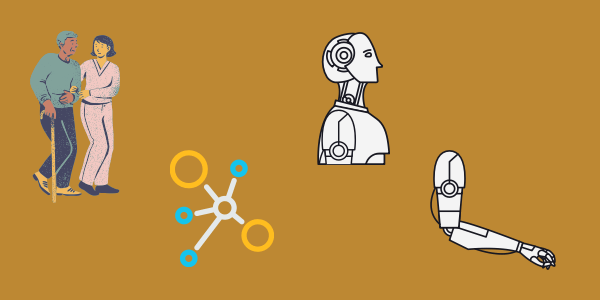
FAQ– Assistive Technology
AT refers to any device, software, or technology that aids with the learning, communication, or function of people with learning disabilities. AT has the potential to be as advanced as a computer. A walking stick, for example, is as low-tech as it gets.
Mobility aids, such as wheelchairs, crutches, scooters, walkers, canes, prosthetic devices, and orthotic devices, are examples of assistive technologies. Hearing aids are devices that help individuals hear better.
The basic goal of assistive devices is to maintain or increase a person’s ability to function and independence, hence enhancing their well-being. They allow people to live healthy, productive, self-sufficient, and dignified lives, as well as participate in school, the labor market, and civic life.
Editor’s Note | Assistive Technology
In conclusion, this article addresses Assistive Technology. We have included information on what AT is, the meaning of an assistive technology device, its importance, its requirements, a global highlight report, and examples. So take your time reading this information. Remember to visit our website for free study materials. This exam also requires hard effort (clever work), enthusiasm, dedication, and consistency. UPSC requires a lot yet also provides a lot in return. Finally, best wishes

